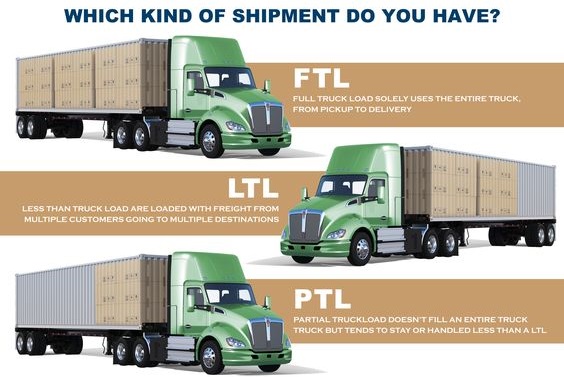Navigating logistics, whether you’re a professional in the field, a supply chain management student, a small business owner, or just an interested individual, can be like learning a new language. To help decode this language, let’s dive into seven key logistics terms and why they matter.
1. TL (Truckload)
Definition and use cases: ‘Truckload’ or TL refers to shipments large enough to fill an entire truck trailer. These are typically over 10,000 pounds or more than 10-15 pallets.
Benefits and considerations: TL is cost-effective for large shipments as you’re paying for the entire truck. However, it requires careful planning to avoid wasted space.
2. LTL (Less than Truckload)
Definition and use cases: ‘Less than Truckload’ or LTL is used when the shipment doesn’t occupy an entire truck. These can range from one pallet to half the truck.
Advantages and challenges: LTL offers flexibility and cost savings for smaller loads but may involve multiple stops, affecting delivery times.
3. PTL (Partial Truckload)
Definition and applications: ‘Partial Truckload’ or PTL falls between LTL and TL. It’s typically used for shipments of 5,000 to 10,000 pounds, or 6 to 18 pallets.
Cost-effectiveness and flexibility: PTL offers the benefits of both LTL and TL, providing cost savings, fewer stops, and reduced handling.
4. FCL (Full Container Load)
Meaning and significance: ‘Full Container Load’ or FCL refers to ocean shipments that use the entire container, typically used when importers have enough goods to fill it.
Pros and cons for businesses: FCL offers lower cost per unit, more schedule flexibility, and less handling. However, it requires large volumes to be cost-effective.
5. LCL (Less than Container Load)
Definition and examples: ‘Less than Container Load’ or LCL is used when importers do not have enough goods for a full container. Multiple shippers’ goods are consolidated into one container.
Benefits and potential drawbacks: LCL allows businesses to ship smaller volumes more frequently but may involve longer transit times due to consolidation and deconsolidation.
6. Cross Docking
Definition and purpose: Cross docking is a practice where incoming shipments are directly loaded onto outbound vehicles with little to no storage in between.
Efficiency and streamlining benefits: Cross-docking reduces storage costs and delivery times, but requires precise coordination and timing.
7. Transloading
Explanation and applications: Transloading is the process of transferring a shipment from one mode of transportation to another. It’s often used when one mode cannot be used for the entire journey.
Advantages and considerations: Transloading offers flexibility and can reduce costs, but requires additional handling, increasing the risk of damage.
In conclusion, these seven essential logistics terms are key to understanding the world of shipping and freight. The more familiar you become with these terms, the more effectively you can manage logistics operations or contribute to logistics discussions. So, keep exploring and learning, and soon you’ll be fluent in the language of logistics!

